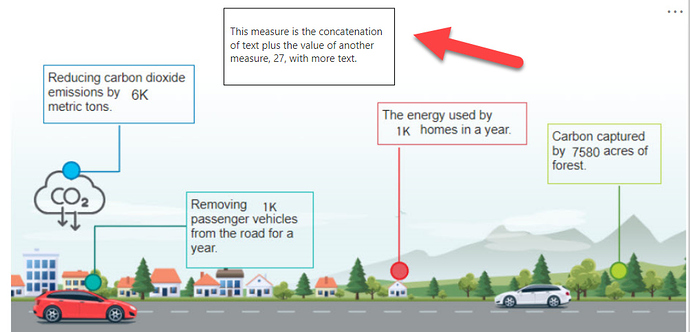Here’s one way to do this using nested CONCATENATE functions (since you can only concatenate two text strings at a time):
Example Label =
VAR FirstString =
CONCATENATE(
"This measure is the concatenation of text plus the value of another measure, ",
[Count Closed Claims]
)
RETURN
CONCATENATE(
FirstString, ", with more text."
)
Interestingly, when I put this example together I found there was more formatting flexibility in using a table visual that card visual in which to drop the measure for display.
I hope this is helpful. Full solution file attached.
- Brian
eDNA Forum - Concatenated Card Solution.pbix (427.9 KB)
